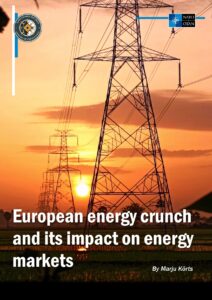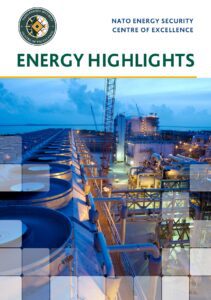
Renewable energy sources and increased energy efficiency are essential to achieve European Union’s climate neutrality by 2050. There has been fast progress in the deployment of renewable energy technologies, several of which are now well established including solar (thermal and PV), hydro and wind technologies. However, recent developments in electric vehicle technology and policy targets in many countries may mean that renewables play a more indirect role in transport. Many future scenarios forecast a rapid expansion of electric (and sometimes hydrogen) vehicles, which could increase demand for renewables to generate clean electricity or hydrogen (UNCTAD, 2019).
There is an increasing emphasis on the technical and economic challenges of integrating larger share of renewables into the electricity grid. Power grid operators must come up with innovative solutions to manage renewable capacity and adopt smart systems to balance supply and demand in the most efficient way possible. The optimal share of fluctuating renewable energy sources in the energy mix depends on various factors. The flexibility of the grid, the back-up capacity, the quality and capacity of the transmission system are some of the challenges. New approaches and enabling technologies are needed to go along with these new generating technologies in order to ensure the grid resilience. These technologies share the potential to facilitate and advance the deployment and use of renewable energy. The list of these enabling technologies is not complete but cover end-use technologies (EVs), energy storage and demand-side energy management technologies (e.g. energy management systems in the buildings). Multiple sources of flexibility are now available, including demand-side response programs, interconnectors, conventional generation and storage. One implication is that further increases in renewable electricity from variable technologies will partly depend on progress with developing and deploying these forms of flexibility.
With the increase in innovation and deployment of different renewable energy sources, there have been improvements in the utilization of these energy sources. Some of these improvements include integration of electric vehicles into the power grid, enabling digital technologies in energy systems and developments in electricity storage technologies. There has been minimal linkage between the transportation and electric power sectors until recently (IEA, 2017). Integration into smart infrastructures, such as vehicle-to-grid integration, is an emerging technology with a lot of potential. There is growing interest in developing vehicle-to-grid systems that provide systems with a bi-directional electricity flow between a vehicle and the power grid. There is possibility of using electric vehicles as storage devices, with the potential of selling electricity back to the grid during peak demand while the vehicles are not being used.
There is an important potential for convergence of electricity systems with digital and information technologies. Such technologies may have a crucial role in enabling a system in which demands can flexibly respond to the conditions of the grid. Smart power grids can match and integrate intermittent sources of electricity such as solar and wind power. This technology accompanied by advanced grid management systems enable smooth integration of renewable energy sources into existing power grids, optimizing distribution and minimizing wastage Digital technologies are also relevant to buildings which account for more than 50 percent of electricity demand. Technological innovations are transforming buildings into active participants in the energy ecosystem. Smart buildings, equipped with sensors, energy management systems and internet-connected devices can optimize energy consumption, monitor and control renewable energy generation, and even participate in demand response programs.
Energy storage systems play a critical role in mitigating the fluctuation by storing the excess generated power and then making it accessible on demand. Today, there exist multiple storage technologies and solutions that are able to compensate for the intermittent nature of variable renewable sources, namely electrochemical-, electrical-, thermal-, and chemical energy storage. Recent years have also seen advances in a range of storage technologies, including new chemistries for lithium-ion batteries with the aim to improve performance and reduce dependence on elements with constrained supply chain. In addition, new approaches to thermal storage for electricity and chemical storage (e.g. the production and storage of hydrogen that can be used to generate electricity) can complement the existing technologies. Taking into consideration all these developments, battery deployment will need to scale-up significantly between now and the end of the decade to enable achieve the agreed energy and climate goals. Therefore, there is also a need for advances in other types of heat or energy storage that can operate over longer timespan (IRENA, 2017). Renewables can play a larger role in primary energy supply when the delivery of energy services is more efficient. As the renewables share increases in the energy mix, less primary energy is required for provision of the same level of energy services. Consequently, distributed renewable energy coupled with energy efficiency improvements reduces peak electricity demand while simultaneously minimizing transmission losses and bottlenecks. As shown in recent analysis by the International Energy Agency (IEA) renewable energy investments allow efficient buildings to be powered more easily, especially when these renewables are not grid-connected (IEA, 2017). Efficient buildings combined with on-site renewable energy generation reduce end-use demand, grid congestion and losses, as well as fuel transportation costs.





